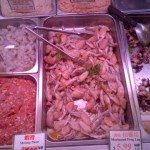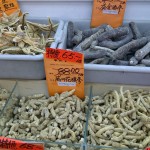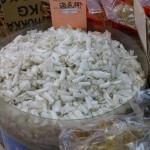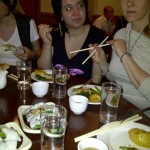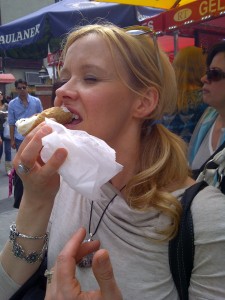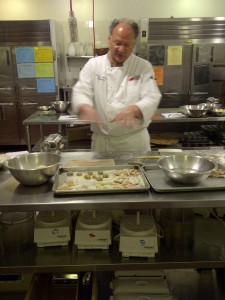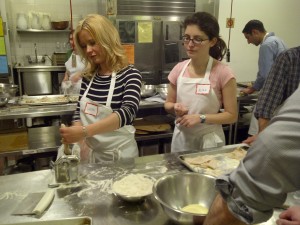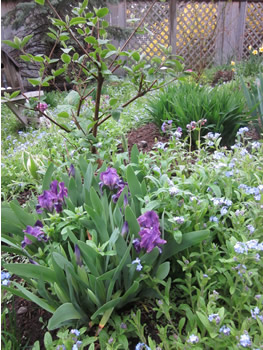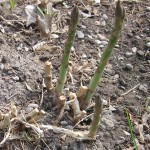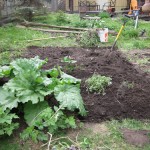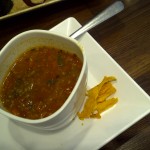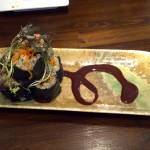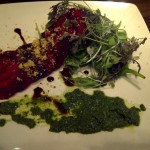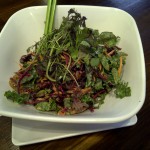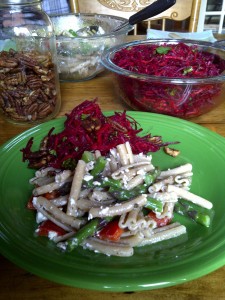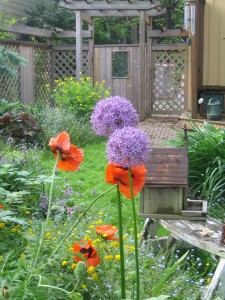
My view as I write this!
Yesterday I was flipping through my binder of cancer articles that I have collected, intending to read when I have the chance, and came across this article written by Dr. Steven Nemeroff, Oncology Health Advisor to Life Extension Foundation. Click here for the full article.
I am not a doctor, but I can give a ‘Coles Notes’ version of this article so that you can decide whether or not it contains information you would be interested in researching further and discussing treatment options with your MD, ND and oncologist. Knowledge is power!
As you probably know, the surgical removal of the primary tumor is the first treatment option for many cancers. The reason behind surgically removing the tumor is that once the tumor has been removed, then the body can be returned to health. Unfortunately this approach doesn’t take into account the reality that, in many instances, after surgery the cancer frequently metastasizes (spreads to another organ). This metastasis can be more serious than the original tumor – and can often prove fatal.
Metastasis of the tumor may occur after surgery as a result of cancer cells splitting off from the tumor and dispersing into the bloodstream or seeding directly into the chest or abdomen. To form a new tumor, that cell must first adhere to the lining of the blood vessel where it secretes powerful enzymes that break down the epithelial lining and basement lining of the blood vessel and allow the cell to burrow through the surrounding connective tissue and arrive at the organ that is its final destination. Here the cancer cell can multiply and form a new colony.
Given this information, what can individuals undergoing surgery to removal a tumor do to protect themselves against an increased risk of metastasis?
Cancer cell adhesion
Cancer cells that have broken away from the primary tumor utilize adhesion molecules – called galectin-3 – to adhere to clump together and thereby form colonies. These molecules are present on the surface of cancer cells and work like Velcro to allow free-standing cancer cells to stick together. Galectin-3 is also used by cancer cells circulating in the bloodstream to latch onto the lining of the blood vessels. This adhesion is a critical step in the tumor forming process.
According to Dr. Nemeroff, a natural supplement called modified citrus pectin (MCP) can inhibit cancer cell adhesion by binding to the galectin-3 adhesion molecules on the surface of cancer cells, thereby preventing cancer cells from sticking together and forming a cluster. MCP can also inhibit circulating tumor cells from adhering to blood vessel linings. There’s a lot of research that has been done to determine the efficacy of MCP and it’s available in this article. Most trial dosages have been 14.4 grams/day for one year.
In addition to modified citrus pectin, studies using Cimetidine (common name is Tagamet, an over the counter medication for heartburn) have shown that it inhibits cancer cell adhesion by blocking the expression of an adhesion molecule – called E-selectin – on the surface of cells lining blood vessels. This blocks the ability of cancer cells to latch on to the blood vessel walls.
The combined data suggests that at least five days prior to surgery, to ingest 800 mg of cimetidine daily and at least 14 grams of modified citrus pectin daily. According to Dr. Nemeroff, this regimen can be followed for a year or longer to reduce metastatic risk.
Preventing Surgery-induced Immune Suppression
The immune system plays an essential role in healing cancer. An important white blood cell to be aware of is the Natural Killer cells (NK). It’s role is to seek out and destroy cancer cells. However, surgery itself reduces NK activity! So without question, it is critical to actively strengthen the immune function by enhancing NK cell activity in the period before surgery.
One prominent natural supplement that can increase NK cell activity is PSK, a specially prepared extract from the Coriolus mushroom. Other supplements that have been documented to increase NK cell activity are garlic, glutamine, IP6 (inositol hexaphosphate), AHCC (active hexose correlated compound) and lactoferrin.
Pharmaceuticals used to increase NK cell activity include interferon-alpha and granulocyte-macrophage colony stimulating factor, as well as interleukin.
At least five days prior to surgery, institute a natural killer cell enhancing program involving PSK, lactoferrin, glutamine, garlic, IP6, and AHCC.
Cancer Vaccines
Produced from a person’s own cancer cells removed during surgery, these highly individualized cancer vaccines greatly amplify the ability of the immune system to identify and target any residual cancer cells present in the body. Cancer vaccines provide the immune system with the specific identifying markers of the cancer that can then be used to mount a successful attack against metastatic cancer cells.
Angiogenesis
Angiogenesis is the process by which new blood vessels are formed from pre-existing blood vessels. Cancer cells use this normal and necessary wound healing process in order to increase blood supply (and thereby oxygen and nutrients) to the tumor. The formation of a blood supply allows tumors to grow beyond the size of a pinhead – without angiogenesis they must remain 1-2mm.
The presence of the primary tumor serves to inhibit the growth of metastatic cancer elsewhere in the body. The primary tumor produces anti-angiogenic factors which restricts the growth of metastases. Surgical removal of the primary cancer results in the removal of these anti-angiogenic factors, and the growth of metastasis is no longer inhibited.
In fact, after surgery levels of factors that increase angiogenesis (to heal the wound) – called vascular endothelial growth factor (VEGF) – are significantly elevated. This can result in an increased formation of new blood vessels supplying areas of metastatic cancer – whether from newly formed colonies or from the activation of dormant micrometastases (those pinhead sized tumors that were before angiogenesis unable to be nourished by a blood supply).
Various nutrients have been shown to inhibit VEGF. These include soy isoflavones (genistein), silibinin (a component of milk thistle), chrysin, green tea (EGCG), and curcumin (also see other posts about angiogenesis).
Five days prior to surgery, the patient may consider supplementing with standardized green tea extract, curcumin, soy genistein extract and silibinin.
Surgical Anesthesia can influence Metastasis
The conventional medical approach to surgical anesthesia has been to use general anesthesia during surgery followed by intravenous morphine after surgery for pain control. The may not be the optimal approach.
Morphine weakens the immune system by diminishing NK activity. Studies on mice actually found that morphine increased angiogenesis and stimulated the growth of breast cancer.
One new approach is the use of conventional general anesthesia combined with regional anesthesia (only affects a specific part of the body). The use of regional anesthesia reduces the amount of general anesthesia required during surgery as well as decreasing the amount of morphine needed after surgery for pain control – especially for nausea and vomiting.
Those requiring morphine for pain control post surgery can consider asking for Tramadol instead. Unlike morphine, tramadol does not suppress immune function and has actually been shown to stimulate NK cell activity.
Less Invasive Surgery
Surgery places an enormous physical stress on the body. Surgeries that are less invasive, therefore less traumatic and less stressful, pose less risk of metastasis, compared to more invasive. An example of a less traumatic surgery for the abdomen, and pelvis is laparascopic surgery – where small incisions rather than large, are used.
For lung cancer, video-assisted thoracic surgery (VATS) is a minimally invasive surgery that you might want to consider.
Inflammation
Cancer surgery causes an increased production of inflammatory chemicals. These chemicals increase the activity of cyclooxygenase-2 (COX-2), a highly potent inflammatory enzyme which plays a pivotal role in promoting cancer growth and metastatis. It fuels cancer growth by stimulating the formation of new blood vessels feeding the tumor, by increasing cancer cell adhesion to the blood vessel walls, and enhances the ability of the cancer cells to metastasize.
Initially, COX-2 inhibitor drugs were designed to alleviate inflammatory conditions such as arthritis, but they have been shown to possess powerful anti-cancer activity.
A number of nutritional and herbal supplements are known to inhibit COX-2. These include curcumin, resveratrol, vitamin E, soy isoflavones (genistein), green tea (EGCG), quercetin, fish oil, feverfew, and silymarin (milk thistle).
Pharmaceutical COX-2 inhibitors include Celebrex and NSAIDS, such as aspirin and ibuprofen.
Conclusion
Since cancer-related death is most commonly the result of metastatic disease, it is crucial to minimize this facilitation. Therefore it is essential to be informed and employ preventative interventions during this critical time in order to minimize recurrence and metastatic spread.
I hope that you have found the key points of this article as interesting and important as I did. If you have any questions, please discuss this article with your MD, ND, oncologist – or give me a call and I can point you in the direction of answers.
Click here to link to the Life Extension Cancer Surgery Special Report with supplement guidelines.




